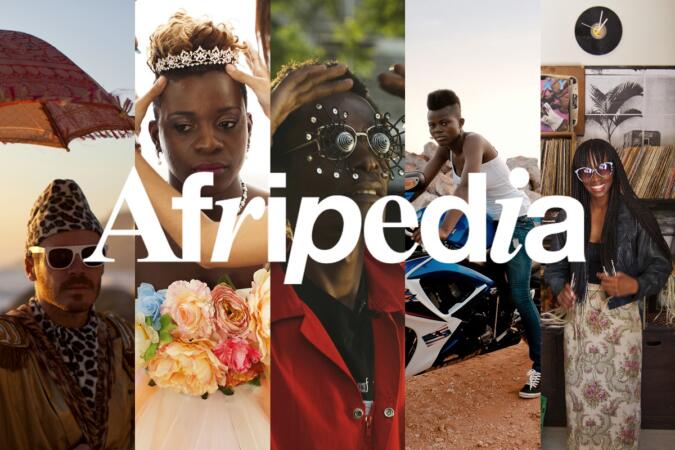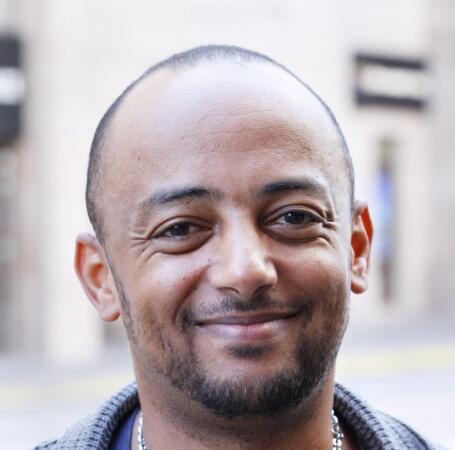
The internet needs more Afripedia.
Afripedia is a digital series that profiles young African creatives from Senegal, South Africa, Kenya, Angola and Ghana. There’s a Senegalese photographer takes photos of his countrymen in elegant poses against the intricate designs of African fabric. There’s an androgynous musician in Ghana who moved to Accra away from her conservative hometown so she could make it. There’s a Kenyan digital artist, Andrew Kaggia, who is one of the leading 3-D artists in the world.

I saw four complete episodes of this series last year at Rio’s Black Film festival–Encontro de Cinema Negro, Brasil, África e Caribe.
Check out the previews at the bottom of this post.
With video profiles, the producers and directors must first choose the right subjects. Then they must capture the images that communicate the subject’s spirit. This is where Afripedia excels. Although most of the profiles are less than 5 minutes long, I felt like I knew these people and I felt like I knew their countries.
Afripedia is the brainchild of Teddy Goitom, an Ethiopian/Eritrean film producer who has spent most of his life in Sweden. He’s now based in New York City.
Check out the interview I conducted with him last year when he was in Brazil.
How did you start your career in documentary film?
It started 20 years ago. I saw a lot of people who were really talented in music and arts and they didn’t have a platform. So I started to follow them by just taking still photos. Then I knew video is going to be the future when it comes to broadcasting culture. I started a network started an online network called Stocktown Films because I wanted to invite other talented people in different fields, in design, fashion, and film so we could collaborate and do projects outside of our daily jobs. We just wanted to find new ways to broadcast culture. The internet was my gateway for learning filmmaking.
How did the idea Afripedia come about?
Music is something that we always connect with Africa. But I didn’t want to focus on Music. I thought that there must be other forms of culture that we never hear about – the art scene, the photographers, the designer, the filmmaker, the animators. The idea started to grow in 2009. In 2009 We went to Ethiopia for the wedding of Marcus Samulues and we did research on a photographer named Aida Muluneh. We also went to Burkina Faso and Ghana on that same trip.
Why did you name it Afripedia?
We called it Afripedia because it’s both about Africans and the Africans who live outside, the African Diaspora.
How did you fund the Afripedia documentaries?
We started to do commercials to fund our own documentaries. We had a chance to go to South Africa to do a commercial for PUMA during the World Cup. We were following the Ivory Coast team. One day of shooting covered the costs of shooting for us so we could do our own stuff for the next three weeks. We did one episode about the heavy metal scene in Soweto and about the fashion scene in Soweto. We shot five stories that were made into a half an hour – Soweto & Capetown. We put down a trailer and we put it online and immediately and people were like, where can we see this? But we didn’t get the financing.
When completing artistic profiles like this, it’s very important to choose the right people.
UIala was on point. We didn’t know so much about her. We got in contact with her manager. We could never talk to her before we did the interview. The first shot that we did is when she opens the gate to her home and she’s laughing. You just knew that this is a person that is going to be interesting to shoot. She gave so much from the first day. You just immediately get inspired by this person because they are so open with telling you how you feel.
When I was watching Afripedia, not once did I feel like you were trying to tell a story about these “poor Africans” who are trying to be creative in “poor Africa.” These people appeared to be very empowered. How do you avoid telling a story like that?
When we do interviews about fashion designers from Paris and Sweden, we don’t ask them about what is your poor story background. It’s not that we are avoiding, it’s just that we are here to talk about creativity. Of course the background of the artists is also important. Some have come from nothing and some have already had an education abroad and came back .I am interested in knowing about where the person is right now and where the person is going.
How are these people contributing to culture and business in their respective countries?
Many artist that we met believe that there is a market in their home countries. They want to contribute. Even if they go abroad they are bringing something else to the scene. Of course it’s difficult when you don’t have governmental funds. Cutlure is capital as well. When you look at Nollywood scene, it’s a market. It’s a billion industry field. Many people are struggling with the question of how they get their funding. A lot of people get into a do it yourself attitude. Whether they are supported or not, they are going to do it themselves.
Since you founded Stocktown films, the website has evolved into a curated site of videos. Can you tell me more about this?
Back 10 years ago when youtube was just starting, it was just a sea of videos. We decided that needed video curators to find these videos. So I started a video magazine called stocktown.com. It’s an online video magazine where we have 40 contributors around the world who are searching for interesting videos and writing about them. They are giving their own personal perspective to the video. It’s everything from short films, to docs, and music videos. We have writers from Kenya, South Africa, Canada.
What are you goals for these films?
They have been broadcasted in Sweden and an African documentary channel called AFridocs. My goal is to show it as much as possible in Africa. We haven’t sold it yet to so many channels.
